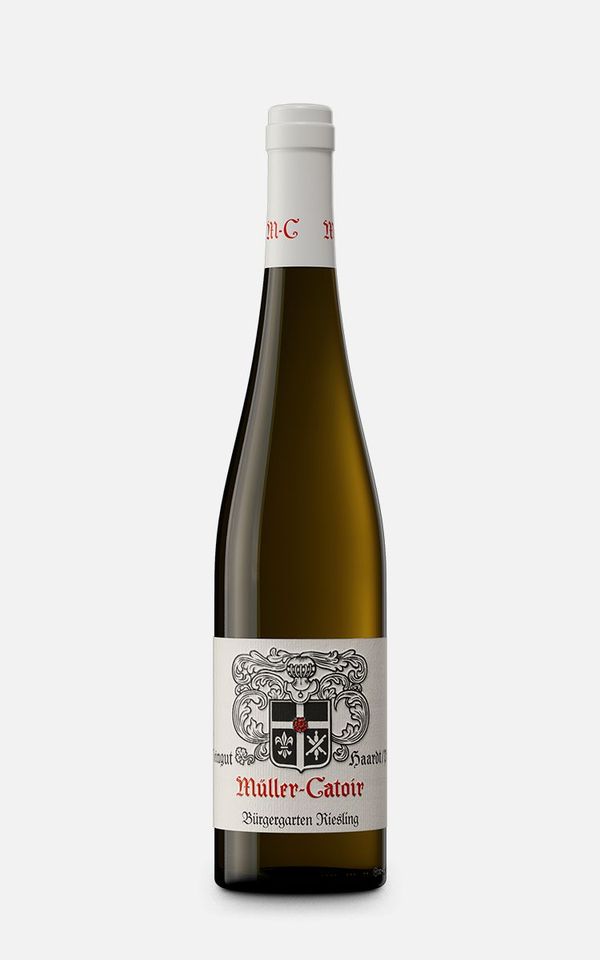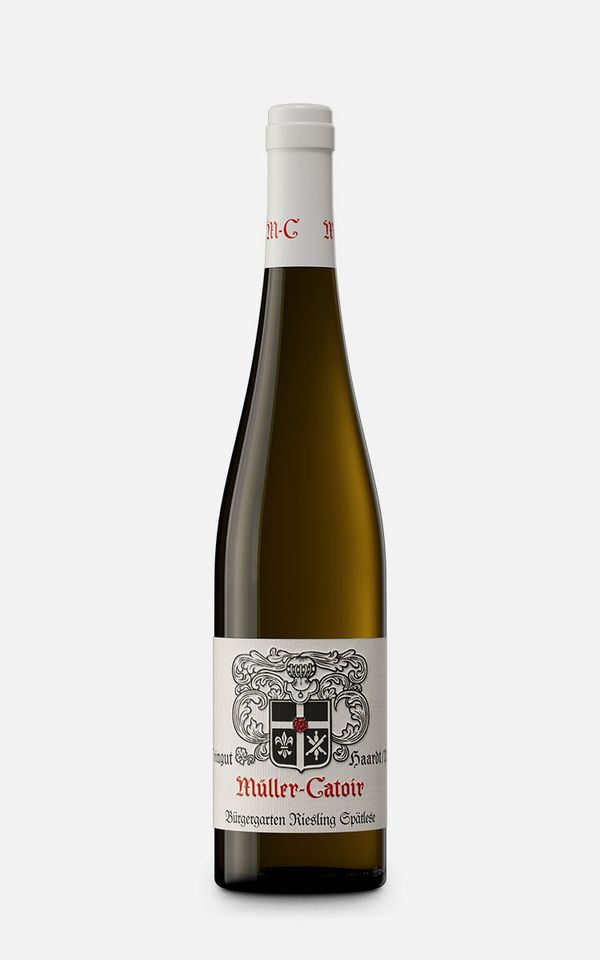The vineyard
Bürgergarten
The name of the „Bürgergarten“ is a reinterpretation of the old term "Bergergarten", which refers to a garden situated on a hill. The very deep soil, which has been used for wine production for centuries, is composed of weathered yellow sandstone interspersed with layers of loess and clay (Haardt sandstone terrace gravel). The special “Haardt sandstone” is still being produced today in the nearby quarry.
Haardt sandstone terrace gravel forms the base of the sandy-clayey, deep vineyard. The Haardt sandstone is fine to medium-grained and is bound with both clay and pebbles. Fragments of the sandstone are scattered in the soil. The stone content increases with depth. Dominated by quartz grains, the soil structure is relatively loose and permeable to water. Clay minerals ensure a sufficient supply of nutrients. In the permeable soil, precipitation transports clay minerals and nutrients to deeper zones. The vines root deeply in search of the limited nutrients and water.
Haardt sandstone terrace gravel forms the base of the sandy-clayey, deep vineyard. The Haardt sandstone is fine to medium-grained and is bound with both clay and pebbles. Fragments of the sandstone are scattered in the soil. The stone content increases with depth. Dominated by quartz grains, the soil structure is relatively loose and permeable to water. Clay minerals ensure a sufficient supply of nutrients. In the permeable soil, precipitation transports clay minerals and nutrients to deeper zones. The vines root deeply in search of the limited nutrients and water.
- Vineyard
- Region: Pfalz
- Vineyard site: Haardter Bürgergarten
- Soil: Haardtsandstein
- Vines: 21-48 years
- Height above sea level: 160-200 m
- Slope: sloped 10%, flat 90%
- Direction: SE
- Download
- Expertise (PDF)
- Classification
- VDP.Erste Lage
- Wines from this location
- Riesling Erstes Gewächs Bürgergarten
- Riesling Spätlese Bürgergarten





